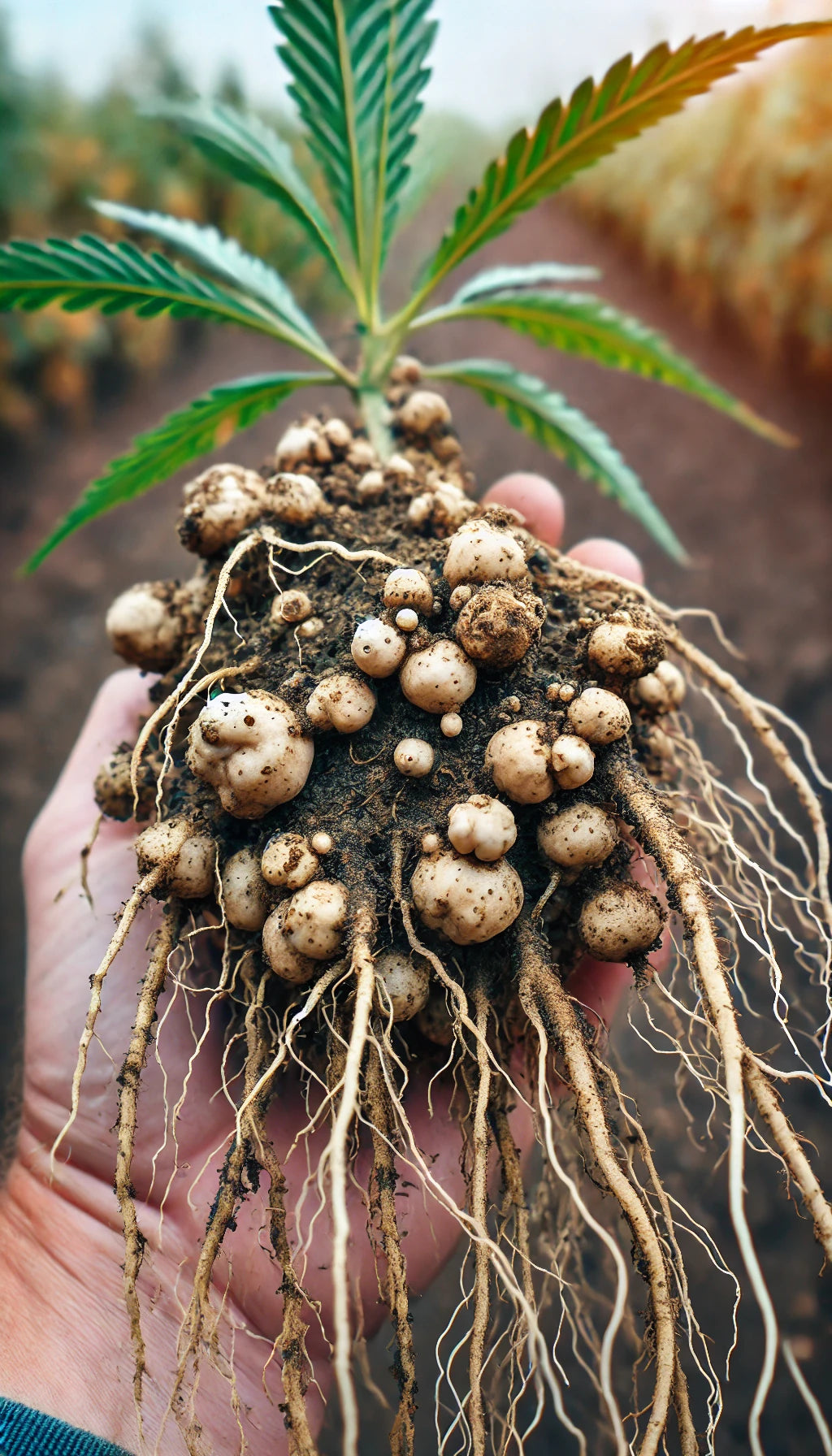Hemp is a robust and resilient plant that can grow impressively under the right conditions. However, even the strongest plants are not immune to diseases and pests. It is therefore crucial for hemp growers to recognize the signs of diseases early on and know how to react to them.
In this guide, we will introduce you to the most common diseases that can affect hemp plants. You will learn how to correctly interpret symptoms, what the causes are and what measures you can take to protect your plants and nurse them back to health. With the help of detailed descriptions and informative pictures, you will be able to quickly identify problems and take targeted action to combat them. This way you can ensure that your plants develop their full potential.
Powdery mildew on cannabis plants
Description: Powdery mildew is a widespread fungal infestation, recognizable by a white, powdery coating on the leaves. It inhibits growth and reduces the yield.
Causes: Favored by high humidity, poor ventilation and warm temperatures.
Symptoms: White coating on leaves and stems, deformed leaves, weak growth.
Solutions: Reduce humidity, improve ventilation, use organic fungicides, grow resistant varieties.
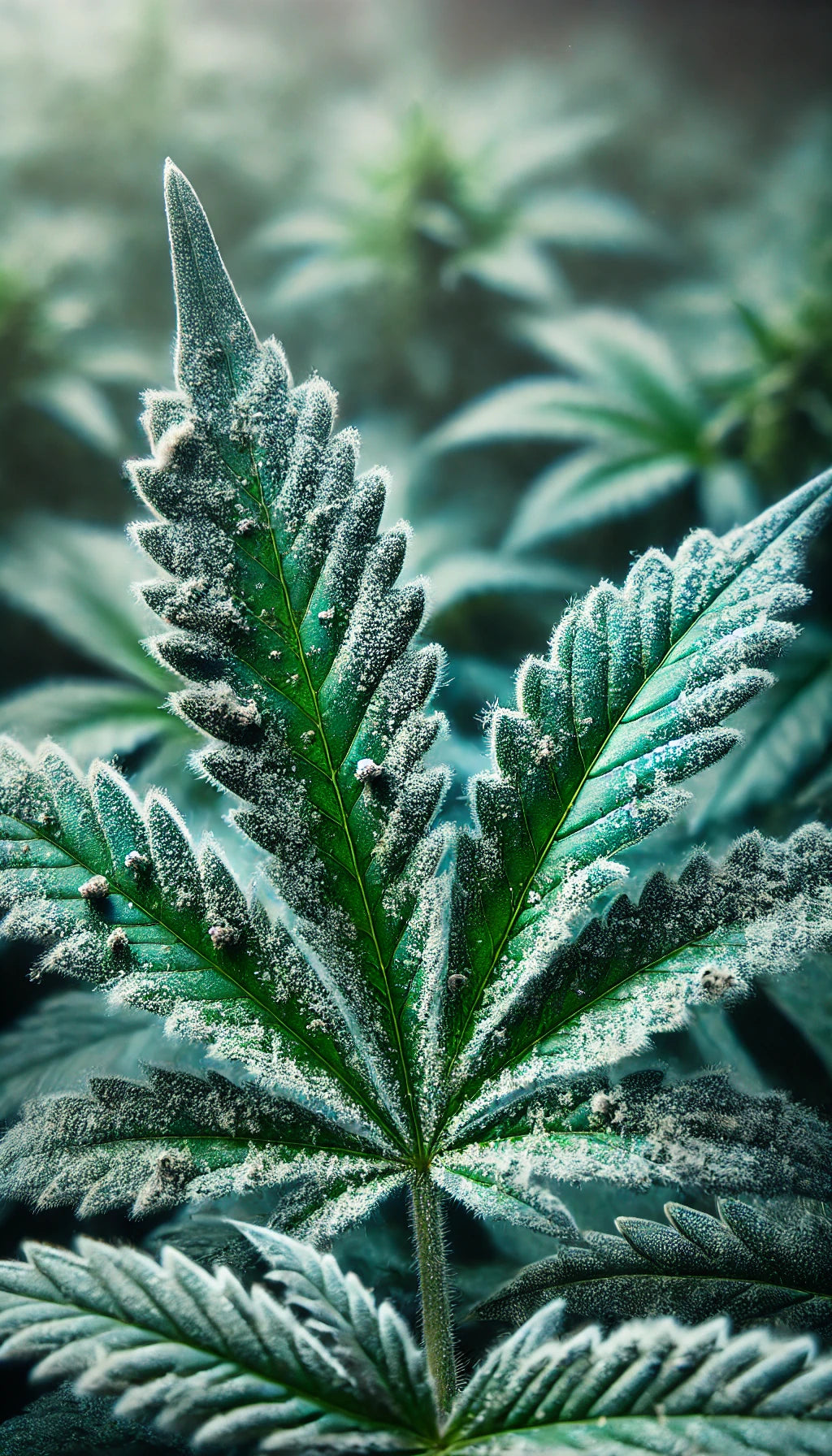
Root rot in hemp
Description: Root rot is a dangerous fungal disease that attacks the roots of the plant, causing them to turn brown and mushy. This leads to slower growth and can cause the plant to die.
Causes: Overwatering and poor drainage leading to waterlogging.
Symptoms: Wilted leaves, slow growth, brown and soft roots.
Solutions: Water less, ensure better drainage, increase soil aeration, use fungicides if heavily infested.
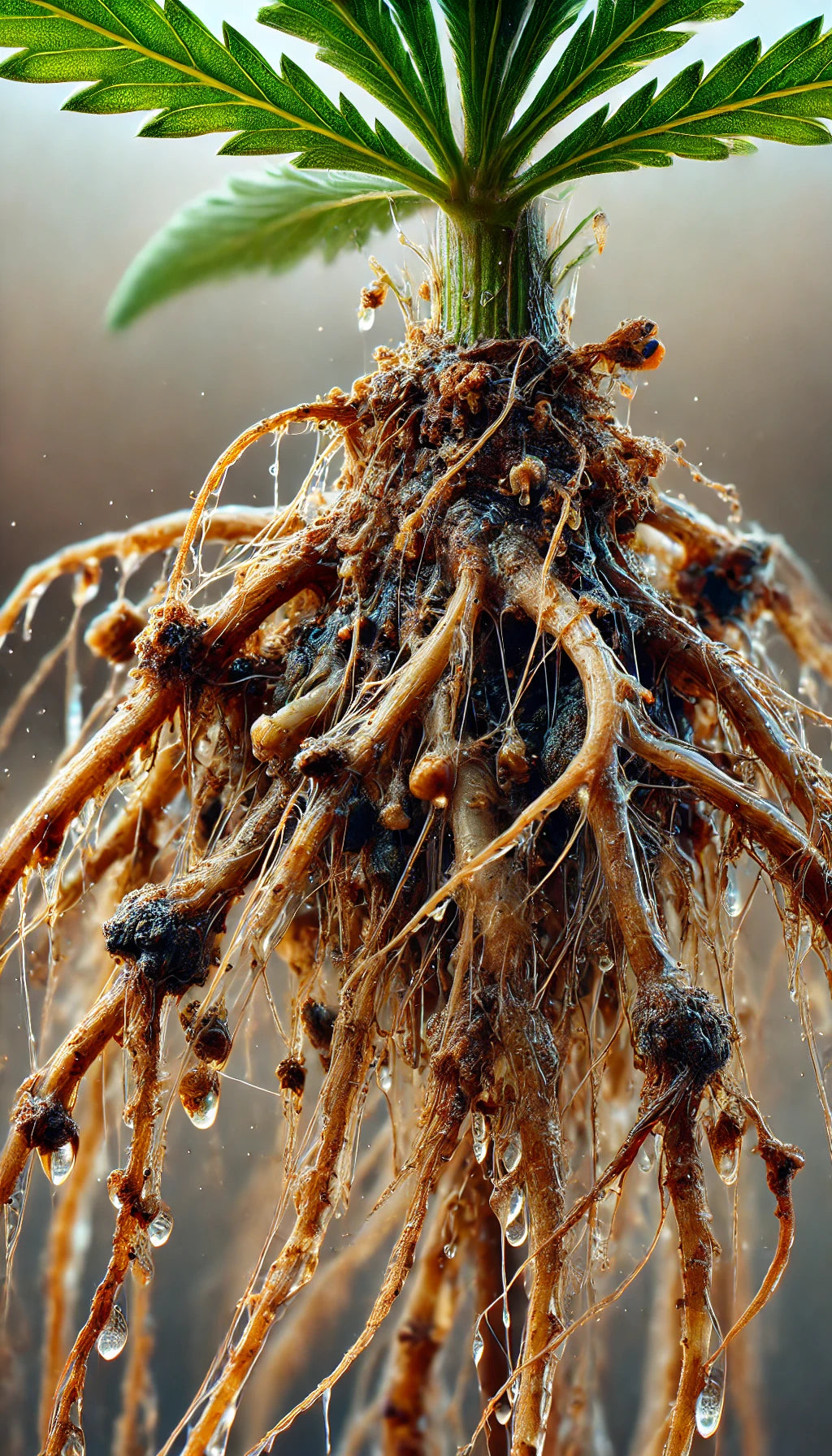
Spider mite infestation on hemp
Description: Spider mites are tiny pests that settle on the underside of leaves and spin their webs there. They suck plant sap from the leaves, which leads to yellow spots and a general weakening of the plant.
Causes: Dry, warm conditions encourage the proliferation of spider mites.
Symptoms: Yellow spots on the leaves, fine cobwebs on the underside of the leaves, weakened and wilting leaves.
Solutions: Increase humidity, remove affected plant parts, use natural enemies such as predatory mites, apply biologically based insecticides in case of heavy infestation.
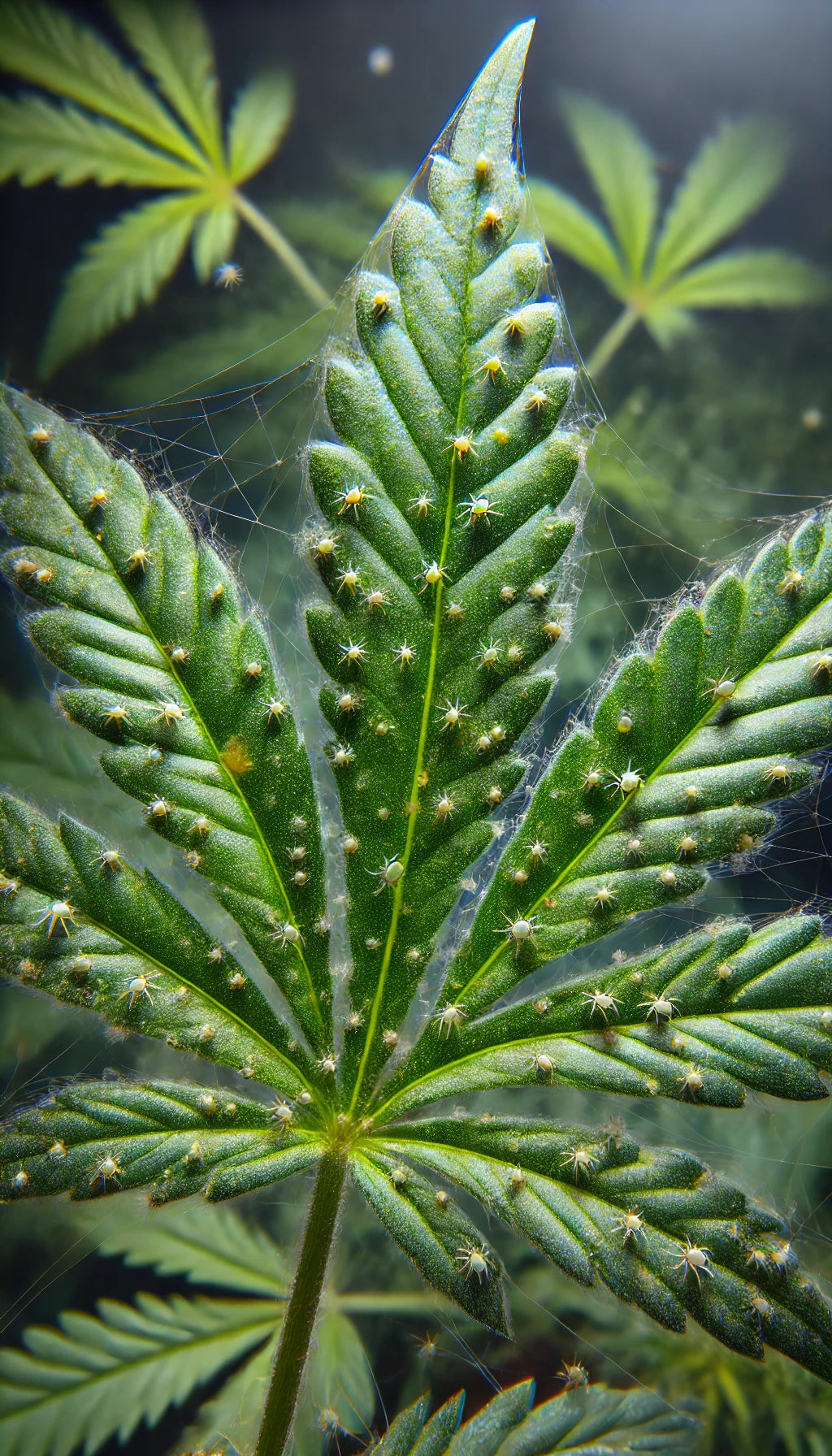
Gray mold in hemp
Description: Gray mold (Botrytis cinerea) is a fungus that mainly attacks the flowers and causes them to rot. It appears as a gray, dusty coating on the blossoms and can cause considerable crop losses.
Causes: High humidity, poor ventilation and cool temperatures.
Symptoms: Gray mold coating on flowers, wilting and mushy plant parts.
Solutions: Improve air circulation, reduce humidity, remove infested parts, use fungicides.
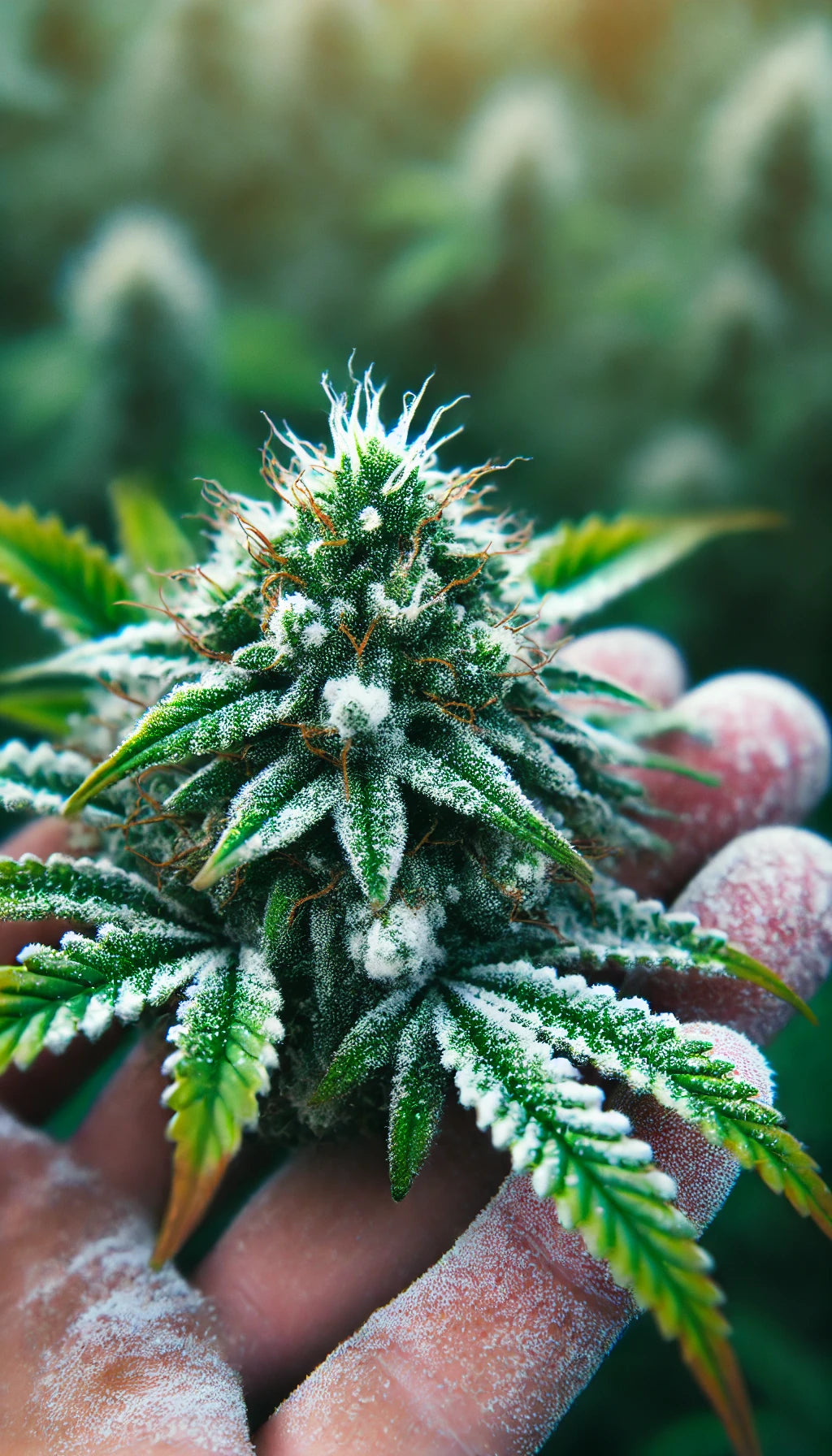
Root gall nematodes in hemp
Description: Root gall nematodes are microscopic parasitic worms that cause galls on the roots and severely impair the growth of the plant.
Causes: Infestation by nematodes, often spread by contaminated soil or plant material.
Symptoms: Thickened, tuberous growths (galls) on the roots, stunted growth, yellow or wilting leaves.
Solutions: Practice crop rotation, use resistant varieties, perform soil sterilization, use biological control methods.
